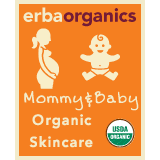| In
a statement that ought to provoke a firestorm of controversy,
the Consumer Product Safety Commission
has just issued a warning to parents not to allow their infants
to sleep with them. The recommendation was based on a study
of deaths attributed to babies sleeping in adult beds from the
period 1990-1997. This report is available at the CPSC website
as the cover story, Don't Place Babies in Adult Beds.
The authors of the study maintain that babies younger than 12
months should be put to sleep in a crib rather than sleep with
their parents.
The
media is now giving this study considerable attention, largely
ignoring previous studies and evidence that safe co-sleeping
is of great benefit to babies and their parents. Almost
lost in the media frenzy are the important statistics involving
babies that are lost to SIDS in their own cribs, in order to glamorize
the new results. This was not a comparative study, yet many
media outlets are jumping on the bandwagon in announcing that
all new parents must buy cribs or they are akin to child abusers.
Peggy O'Mara, editor of Mothering Magazine, writes more
about the media and government's sudden attack on co-sleeping
in Get Out of My Bedroom!
Dr.
Jay Gordon, a pediatrician
in Santa Monica and a well-known authority on breastfeeding and
attachment parenting, was less than enthusiastic about the new
study. "Crib death may be prevented by co-sleeping, and breastfeeding
is increased by sharing the family bed. Countless thousands
of lives are saved by the family bed and in twenty years as a
pediatrician I have never seen a child in any way endangered by
sleeping with her parents. These researchers should be ashamed
of themselves."
The
key to any sleeping arrangement in any household is safety
and understanding and elimination of potential risk factors.
While no sleeping arrangement can be a 100% guarantee that there
will be no problems, there are many things that parents do not
know about creating a safe sleep space for their children.
In the CPSC study, most deaths occurred simply because parents
did not put into practice safety precautions for their babies.
According to the National SIDS Alliance, approximately 2,700 babies
die each year from SIDS; the vast majority of those sleeping
alone in a crib. In the CPSC study, 515 died between 1990 to 1997
directly as a result of poor safety in co-sleeping. Since
much research has linked co-sleeping to decreased SIDS incidence,
it is imperative that parents educate themselves about safety
rather than blame the sleeping arrangements for causing harm.
If
you do use a crib for your child, you need to know some basics.
Cribs manufactured before 1982 can be dangerous and should not
be used for children, so do not accept hand-me-downs from well-meaning
relatives. Be certain the paint is not lead based and does
not crack. Look for missing or loose slats or loose screws
on the crib. Do not allow pillows or stuffed animals in
bed with your baby until the baby is at least 12 months of age;
and when the baby can stand, remove all bumpers. Be careful
that only lightweight blankets are used; better yet, use a light
blanket sleeper for the child so that they can't get tangled in
blankets and suffocate.
Co-sleeping
has been a safe, healthy, and wonderful alternative to the crib
for many families. Katie Allison Granju, author of Attachment
Parenting: Instinctive Care for Your Baby and Young Child,
recommends these safety factors when co-sleeping (many can be
applied to crib sleep as well):
-
When
using a standard, off-the-floor bed, be absolutely sure that
your baby cannot roll or fall off the sides.
-
Young
infants should sleep between their mother and the bed rail,
not between both parents or beside an older sibling.
-
Make
sure that your mattress or futon provides a firm sleeping
surface. Never, ever allow an infant to sleep on a waterbed,
featherbed, beanbag, deep pillowtop mattress or other inappropriately
soft surface.
-
Never
sleep with your baby if you are under the influence of drugs,
alcohol or prescription medication that makes you unusually
groggy or sleepy.
-
Exceptionally
obese parents should use a sidecar arrangement (crib attached
to the side of the bed) rather than having a young infant
in the bed with them.
-
Do
not overload your bed with excessive pillows, blankets, or
stuffed animals.
-
Never
fall asleep on a couch, sofa, or overstuffed chair with your
baby.
-
Do
not stuff too many bodies into a bed with a small baby.
-
Make
sure that your baby isn't overdressed. Remember, the
body heat in a family bed makes most bedtime bundling unnecessary.
-
Dress
your baby in safe sleepwear. Flame retardant with no strings
or ties, just as you would if she were sleeping alone.
The
study performs a service in pointing out the dangers of sleeping
unsafely; but the implication that babies should never sleep with
their parents, even with the proper precautions, may be a serious
disservice to American families. The bottom line is...sleep
safely! |





